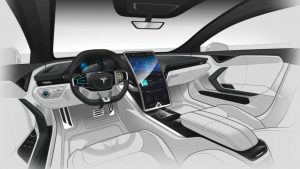
Credit: iStock
Electric cars, also known as electric vehicles (EVs), are vehicles that are powered by one or more electric motors, using electricity stored in rechargeable batteries instead of internal combustion engines that burn fossil fuels.
Electric cars use rechargeable batteries to store and supply power to the electric motor. Lithium-ion batteries are commonly used in modern electric cars due to their high energy density, longevity, and fast-charging capabilities. Advancements in battery technology have resulted in increased range and improved performance of electric vehicles.
Electric cars are propelled by electric motors, which convert electrical energy from the battery into mechanical energy to drive the wheels. Electric motors offer instant torque, providing quick acceleration and a smooth driving experience.
They often employ regenerative braking, a technology that captures and converts some of the energy lost during braking back into electricity. This process helps recharge the battery and improve overall energy efficiency.
Charging infrastructure is a crucial aspect of electric car technology. This includes charging stations located in public areas, workplaces, and homes. There are different levels of charging, including Level 1 (standard household outlet), Level 2 (240V charging station), and Level 3 (fast DC charging). Fast-charging stations can significantly reduce charging times, allowing for longer trips.
It will be interesting to note that range of distance an electric car can travel on a single charge differs. The range varies depending on the vehicle model and battery capacity. Similarly, charging time depends on the charging level and battery size. Rapid advancements in battery technology and charging infrastructure have led to longer ranges and reduced charging times.
V2G technology allows electric vehicles to not only consume electricity but also send power back to the grid when needed. This bi-directional flow of electricity can help stabilize the electrical grid and make better use of renewable energy sources.
Electric cars often come equipped with various connected features, such as smartphone apps for monitoring battery status, locating charging stations, and pre-conditioning the vehicle’s interior temperature. These features enhance the user experience and provide convenience to electric car owners.
It’s important to note that electric car technology is rapidly evolving, with ongoing advancements in battery technology, charging infrastructure, and overall vehicle performance.
Advantages of electric vehicles
Electric vehicles (EVs) offer several advantages compared to traditional internal combustion engine vehicles. Here are some key advantages of electric vehicles:
Environmental Benefits
One of the significant advantages of electric vehicles is their positive impact on the environment. EVs produce zero tailpipe emissions, meaning they don’t release harmful pollutants like carbon dioxide (CO2), nitrogen oxides (NOx), particulate matter, and other greenhouse gases. By reducing reliance on fossil fuels, electric vehicles help mitigate air pollution and combat climate change.
Reduced Dependence on Fossil Fuels
Electric vehicles rely on electricity as their primary source of energy, which can be generated from a variety of sources, including renewable energy like solar and wind power. By shifting to electric vehicles, we can reduce our dependence on fossil fuels, which are finite resources and contribute to greenhouse gas emissions and air pollution.
Energy Efficiency
Electric vehicles are more energy-efficient compared to internal combustion engine vehicles. EVs convert a higher percentage of the energy from the grid to power at the wheels, while traditional gasoline vehicles waste a significant portion of energy through heat and friction. This increased energy efficiency contributes to lower energy consumption and operating costs for EV owners.
Lower Operating Costs
Electric vehicles typically have lower operating costs compared to conventional vehicles. Electricity is generally cheaper than gasoline or diesel fuel on a per-mile basis. Additionally, EVs have fewer moving parts and require less maintenance, as they have no oil changes, spark plugs, or complex transmission systems to maintain. Over time, these factors can result in cost savings for EV owners.
Quiet and Smooth Operation
Electric vehicles operate quietly and provide a smooth driving experience due to the absence of internal combustion engines and mechanical transmission systems. This can enhance comfort for passengers and reduce noise pollution in urban areas.
Government Incentives
Many governments around the world offer incentives to promote the adoption of electric vehicles. These incentives may include tax credits, grants, rebates, or subsidies, which can make purchasing an electric vehicle more affordable and attractive to consumers.
Advancements in Technology
The rapid development of electric vehicle technology has led to improvements in battery performance, range, and charging infrastructure. With advancements in battery technology, electric vehicles are becoming more practical and capable of longer ranges, making them suitable for a wider range of driving needs.
It’s worth noting that while electric vehicles offer significant advantages, there are also considerations such as charging infrastructure availability, range limitations, and the environmental impact of battery production and disposal. However, the ongoing advancements in electric vehicle technology and infrastructure are addressing many of these challenges, making electric vehicles an increasingly viable and sustainable transportation option.
What do you like about this story?
Kindly like and share the story.





















